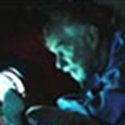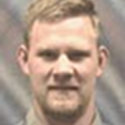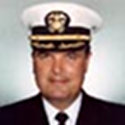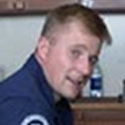

Droycon Bioconcepts, Inc. - Regina, Saskatchewan, Canada
Dr. Roy Cullimore, a microbiologist from Saskatchewan, Canada, wears many hats. He is a scientist (applied microbial ecology), consultant (biofouling issues), inventor (seven patents with two commercially developed products), retired professor (University of Regina) and successful business owner (Droycon Bioconcepts, Inc.). Dr. Cullimore’s interest in Titanic began shortly after the wreck was discovered in 1985 when he recognized the now famous rusticles as being the same microbial communities that have plagued wells and dams for many years. His innovative research in microbiology has led him and his team of researchers to examine rusticles at Titanic and other deep-sea wrecks throughout the world.
During this expedition, Dr. Cullimore will investigate biological corrosion impacting the structural integrity of Titanic, primarily through the activities of rusticles and other microbial events. His activities include placing scientific experiments near the wreck, and analyzing video images from the ROVs for changes in rusticle growth, the results of which can help scientists to better understand shipwreck degradation. This will be Dr. Cullimore’s fourth expedition to Titanic.

Technology R&D Coordinator - Mitretek Systems
Justin Manley is the lead ocean engineer at Mitretek Systems. As a member of the Oceanic Atmospheric and Space Systems Program, his primary client is NOAA’s Office of Ocean Exploration (OE), for which he manages all technology research and development. He also manages Mitretek’s Meterology and Ocean Science Lab, which is currently researching advanced maritime security technologies and needs.

Expedition/Data Coordinator, NOAA Office of Ocean Exploration
Catalina Martinez joined NOAA’s Office of Ocean Exploration (OE) in 2002. She has an MS in oceanography and an MA in marine affairs from the University of Rhode Island. Ms. Martinez has worked on fishery and other marine-related issues in various regions of the world’s oceans. Her most recent work has included research cruises to the Gulf of Alaska, the Northwestern Hawaiian Islands, and the Caribbean's Puerto Rico trench.

Director, NOAA Office of Ocean Exploration
Captain Craig McLean is the Director of NOAA’s Office of Ocean Exploration. He is an active duty officer in NOAA’s Commissioned Corps, with 22 years of service within the agency, at sea and ashore. He received a BS in zoology from Rutgers University. After spending two years in the diving industry and helping to create a nonprofit marine education program serving urban students, he was commissioned in the NOAA Corps. He has served aboard hydrographic survey ships, oceanographic, and fisheries research ships. Captain McLean was the first Commanding Officer of NOAA’s largest and newest fisheries research vessel, the 224-ft Gordon Gunter.
Capt. McLean is also an attorney and belongs to the American Bar Association and the Pennsylvania Bar. He has practiced marine resource and admiralty law for NOAA, and served as legal advisor to the NOAA Corps.

Maritime Archaeological Program Officer, NOAA Office of Ocean Exploration
Lieutenant Junior Grade Jeremy Weirich is a NOAA Corps officer working for NOAA’s Office of Ocean Exploration (OE) as the maritime archaeological program officer. He has a BS in marine science from the Maine Maritime Academy and an MS in maritime archaeology from the University of Southampton, UK, where he specialized in marine chemistry and remote sensing. Before joining OE, he served as a hydrographer and a field- operations officer aboard the NOAA Ship Whiting, a hydrographic survey vessel. In his current position, LTJG Weirich leads and coordinates all marine archaeology and heritage activities for OE, and assists with all mapping and GIS projects. He also works closely with other NOAA programs to help establish shipwreck policies with other federal and state agencies, and assists in joint projects addressing submerged cultural resources.